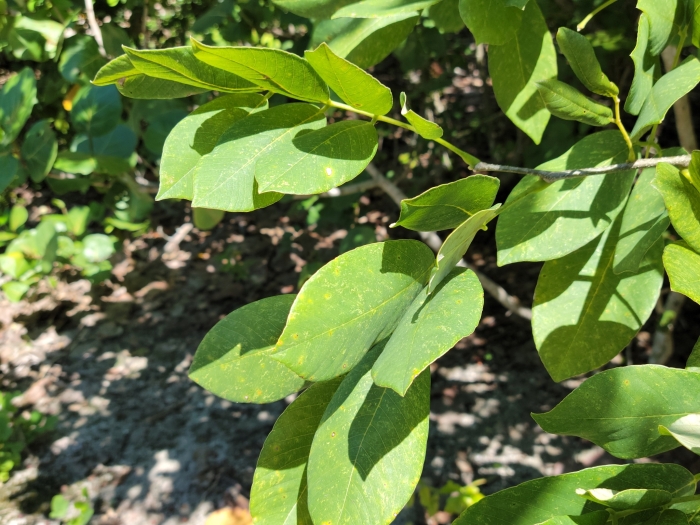Florida Fishpoison Tree
(Piscidia piscipula)
Florida Fishpoison Tree (Piscidia piscipula)
/
/

Jay Horn
CC BY 4.0
Image By:
Jay Horn
Recorded By:
Copyright:
CC BY 4.0
Copyright Notice:
Photo by: Jay Horn | License Type: CC BY 4.0 | License URL: http://creativecommons.org/licenses/by/4.0/ | Rights Holder: Jay Horn | Publisher: iNaturalist | Date Created: 2021-09-25T14:31:07-07:00 |



























































Estimated Native Range
Summary
Piscidia piscipula, commonly known as Florida Fishpoison Tree or Jamaican Dogwood, is a deciduous tree or large shrub native to coastal woodlands and mangrove edges in the Caribbean, Central America, and Mexico. It typically grows to a height of 12 to 15 meters with a spreading canopy. The tree’s appearance is characterized by its white flowers, which are tinged with red or pink and appear in pea-like clusters in May. These flowers are not only attractive to bees but also quite showy, making the tree a desirable ornamental. The flowers develop into distinctive light brown, bean-like pods with four papery wings, containing red-brown oval seeds. The bark, which has an unpleasant odor and a distinctly acrid and bitter taste, can cause a burning sensation in the mouth.
The Florida Fishpoison Tree is valued for its hardy nature and attractive seasonal flowers, making it an ideal medium-sized shade tree for yards and along fence rows in tropical and subtropical climates. It is also used for its medicinal properties, as the bark has been traditionally used for its sedative and analgesic effects. In cultivation, it requires full sunlight for maximum development and is highly tolerant of drought once established. However, it is sensitive to cold and is best suited to areas within plant hardiness zone 11. The tree does best in full sun, with medium amounts of water, and in soils with medium drainage. Care should be taken as the tree’s bark and seeds are toxic if ingested, and the tree can be susceptible to root rot if overwatered or planted in poorly drained soils.CC BY-SA 4.0
The Florida Fishpoison Tree is valued for its hardy nature and attractive seasonal flowers, making it an ideal medium-sized shade tree for yards and along fence rows in tropical and subtropical climates. It is also used for its medicinal properties, as the bark has been traditionally used for its sedative and analgesic effects. In cultivation, it requires full sunlight for maximum development and is highly tolerant of drought once established. However, it is sensitive to cold and is best suited to areas within plant hardiness zone 11. The tree does best in full sun, with medium amounts of water, and in soils with medium drainage. Care should be taken as the tree’s bark and seeds are toxic if ingested, and the tree can be susceptible to root rot if overwatered or planted in poorly drained soils.CC BY-SA 4.0
Plant Description
- Plant Type: Tree, Shrub
- Height: 25-40 feet
- Width: 20-30 feet
- Growth Rate: Moderate
- Flower Color: White
- Flowering Season: Spring
- Leaf Retention: Deciduous
Growth Requirements
- Sun: Full Sun, Part Shade
- Water: Medium
- Drainage: Medium
Common Uses
Bird Garden, Butterfly Garden, Low Maintenance, Showy Flowers
Natural Habitat
Native to coastal woodlands and mangrove edges in the Caribbean, Central America, and Mexico
Other Names
Common Names: Dogwood, Fish Poison, Fish Poison Tree, Jamaica Dogwood, May Bush, Maytree Of The Creoles, Fish-Fuddle Tree, Jamaican-Dogwood, Bois Ivrant, Borrego
Scientific Names: , Piscidia piscipula, Piscidia erythrina, Piscidia communis, Ichthyomethia communis, Ichthyomethia piscipula, Erythrina piscipula, Erythrina piscidioides, Ichthyomethia piscipula var. typica, Piscidia inebrians
GBIF Accepted Name: Piscidia piscipula (L.) Sarg.